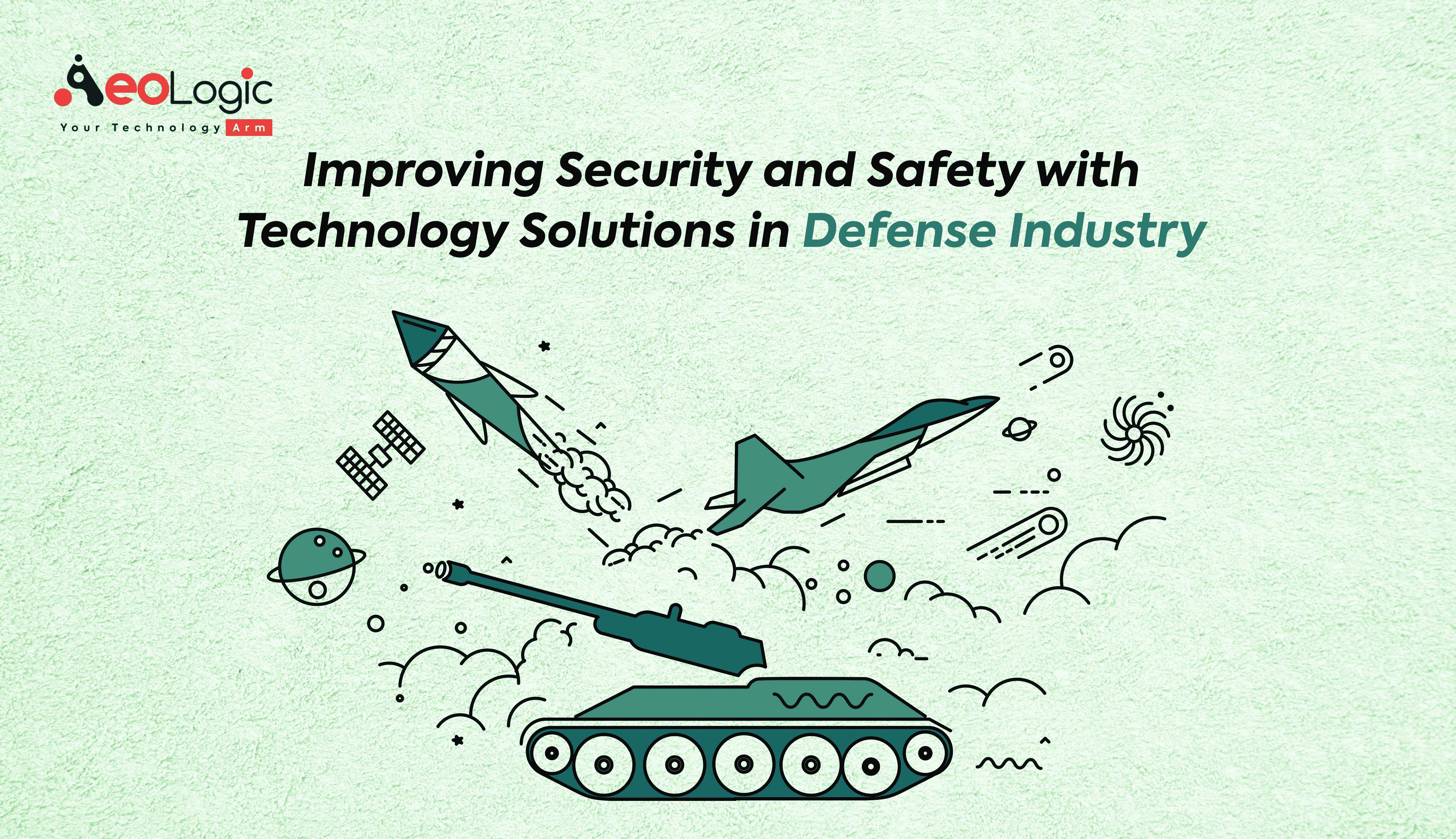The defense sector is playing a crucial role in managing national security and protecting our nation’s interests. We acknowledge the incomparable challenges and threats encountered by defense industry base (DIB) companies. Our mission is to help in improving security and safety with technology solutions. And thus, deliver top level cybersecurity solutions customized to aid you in staying ahead of the developing threat environment. In this blog post, we will be outlining our comprehensive strategy to recognizing the top cybersecurity threats in the defense industry. Therefore, ensuring you can continue to concentrate on your core business goals.
The objective of the defense industry is to help in making sure of the security of a nation, its citizens, crucial infrastructure, and government authorities. As such, often, they are the victim of Advanced Persistent Threats (APT) groups working together with nation-states for stealing intellectual property (IP) to boost domestic aerospace and defense potential, build countermeasures, and gather intelligence with which to manage, probably infiltrate and over grow other nations’ defense systems.
Also read: Benefits of RFID in Asset Tracking Management for the Navy
For all the above stated reasons, defense and aerospace companies are improving security and safety technology solutions by advanced cybersecurity frameworks. In order to meet all their compliance needs and guard against the several cyber threats they are facing in real-time. However, what are some of the best approached in which defense and aerospace organizations can boost data security?
Let’s take a closer look.
Improving Security and Safety Technology Solutions
Assess Data Sensitivity
An impressive security strategy not only helps in protecting a company’s network and the data kept in it. However, it also insures that employees are able to still execute their tasks with efficiency without their processing systems being slowed down by unmanageable policies. Therefore, to mitigate the impact data protection technological solutions have on regular business operations, defense and aerospace businesses need to find and secure only data that is accounted to be sensitive.
Data classification is also an imperative part of compliance attempts. To rightly identify which level CMMC compliance an business needs to reach, they first have to recognize what types of CUI they gather. CUI refers to extremely sensitive business and customer information such as sensitive intelligence data, tax-related information, patents, and intellectual property. Solutions such as Data Loss Prevention (DLP) tools are helping in allowing companies to not only recognize and manage files containing sensitive information. However, it can also assist in controlling its movements through policies that are targeting only data defined as sensitive.
Protecting Data in Isolated Environments
Isolated surrounding are common in the defense and aerospace industry. This implies that they are not linked to the internet and sometimes not even to a broader internal company network. While this is building them more secure from outside attacks. Often, their isolation is implying that removable devices will be networked to them to recover or add data to a computer. Whether it is new software or merely a recovery of logs and reports, removable devices such as USBs and external drives can be implemented for accessing isolated information systems.
This is bringing certain vulnerabilities to data security. For one, USBs in specific is a popular tool for the extension of malware, nonetheless malicious or compromised staff may also make an effort to steal data this way. Even more, legitimate application of removable devices can be questionable. The data, once it leaves the safety of an isolated machine, is no longer secured as such devices can simply be lost or stolen.
Device control regulations can assist in mitigating these risks. By monitoring the application of USB and peripheral ports, businesses can restrict their use to trusted devices that are organization-issued. And distinctly recognize the user and the time a device was linked to an isolated machine. When integrated in conjunction with DLP policies, device control can also be implemented to block, log and report any effort to transfer extremely sensitive data to removable devices.
For DLP solutions to operate in isolated atmosphere, it is essential for them to be integrated straightly on the endpoint. Once this is performed, the software does not need an internet connection to work. Logs are kept locally and updates can be implemented offline as well.
Use Encryption
All CMMC levels entails encryption-related demands. Such as the need to encrypt communication sessions and storage devices containing CUI. Such as USB drives, laptops, and smartphones. Furthermore, encryption is also one of only two technical security aspects expressly stated in the text of the GDPR.
Technology solutions entailing Encryption are often needed to meet current encryption standards such as FIPS 140-2 and FIPS 197. Several of those that are already existing as native tools on mobile phones or operating systems such as Windows and macOS. These are already meeting these standards. Which implies business are not needing to spend on additional external solutions. For encrypting hard drives or phones.
Subsequently, when it comes to retractable devices. Businesses can integrate an enforced encryption solution. Such as that provided by Endpoint Protector. With the help of it, any time-sensitive data that is moved onto devices such as USBs will be automatically encrypted with government-approved encryption compliance. This then helps in preventing any outsiders from getting the data. Without a decryption key and allows organizations to meet compliance requirements.
Also read: The Importance of Geospatial Data in National Security
In conclusion
Improving security and safety technology solutions is highly needed for our defense industry. The theft of extremely sensitive data or loss of control over a system can have real consequences both for national security. On the other hand, also for a defense and aerospace’s organization’s bottom line. Data breaches can sabotage their potential to win new contracts as security accidents are observed as red flags. It may also build in obtaining certifications such as CMMC more difficult. The defense and aerospace industry must therefore create combatting these threats and making cyber resiliency a priority.
Connect with us to know more.










